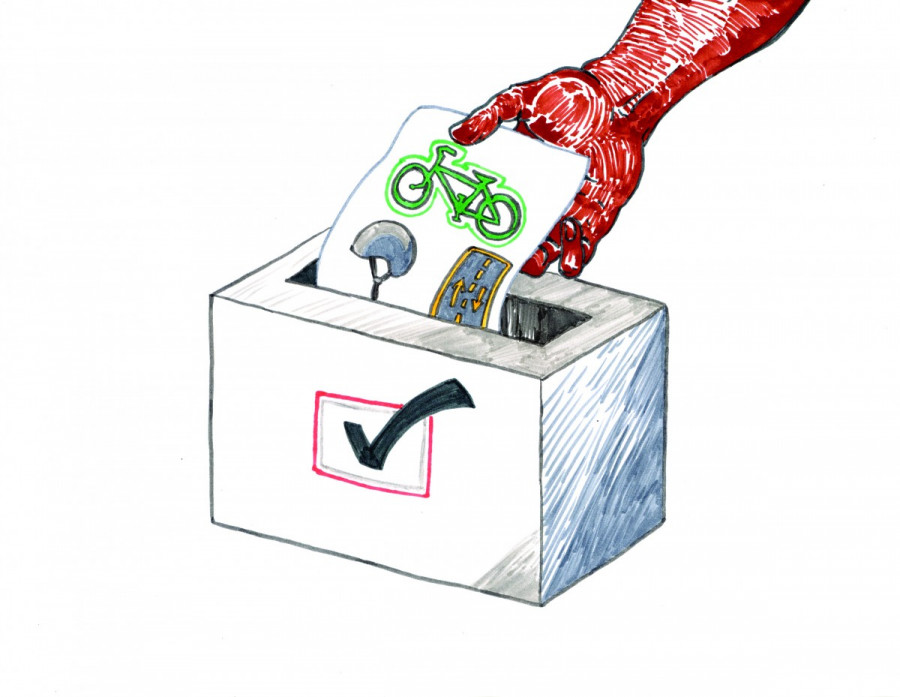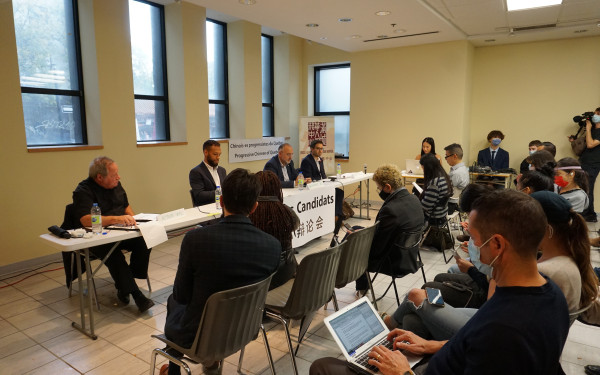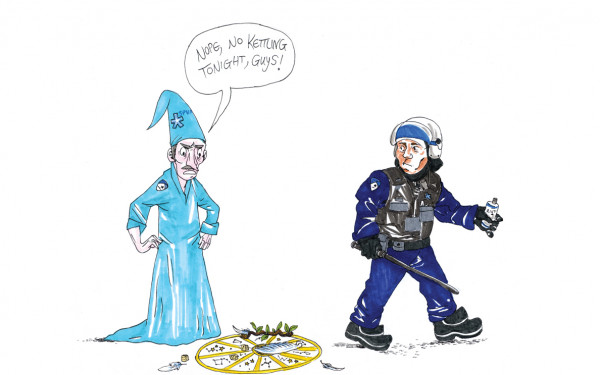Four Wheels Good, Two Wheels Better
Make Space for Bikes in City Hall Race
As the Nov. 3 municipal election draws closer and closer, more candidates have begun to outline their promising-yet-possibly-unattainable campaign promises.
Meanwhile, cycling advocate group Vélo Québec has hopped onboard the election bandwagon, issuing a 16-page report detailing what they wish to see change over the period from 2014 to 2021. Broken down by major cities, the report gives suggestions on what to build upon in an attempt to create a set of realistic goals that could reasonably be achieved over a two-term period.
In a study conducted by Vélo Québec, 70 per cent of Quebecers stated that if streets were safer and more bike-friendly they would be more likely to use their bikes for transportation. The fact that well over half of the population would seem to be willing to pick up a bike (or use theirs more often) if they felt safer on the road is reason enough to promote cycling and effective bike infrastructure.
In 2010, 53 per cent of Montrealers reported using their bicycles for transportation. That places us nearly 20 per cent above the Quebec average, which currently rests at 37 per cent, according to Vélo Québec.
With such a significant proportion of the Montreal population relying so heavily on their bikes, it makes sense that multiple mayoral candidates have come out in support of the cycling community.
What’s troubling, however, is that no mayoral candidate, with the exception of Projet Montréal candidate Richard Bergeron, has specifically detailed what this support would actually mean.
Short of a few buzzwords, candidate Denis Coderre and his team have yet to say anything substantial with regards to what he aims to do to improve the cycling experience in the city.
Coalition Montréal candidate Marcel Côté and his party have outlined similarly vague goals.
The same goes for candidate Mélanie Joly.
Cycling infrastructure has to be ingrained in the design of new neighbourhoods, rather than be something added in as an afterthought.
Of course, this isn’t possible for neighbourhoods that already exist, but the fact remains that the likes of bike lanes or proper signage need to be carefully integrated into urban design, rather than just plunked down.
The recommendations that Vélo Québec is pushing are by no means radical. They are, for the most part, relatively easy to achieve and could likely be accomplished if more effort was put into simply maintaining the existing infrastructure.
Repainting the lines on bike lanes to clearly show the separation of bike space and car space, for example, is not a particularly arduous task. It does, however, reinforce the fact that dedicated space is still there for cyclists.
The group has also proposed an increase in parking for bikes, and has suggested that there be five to 20 spaces for every 100 metres of commercial space. Projet Montréal has indicated that they wish to place greater importance on cycling and public transport, and that one of the ways they see this happening is through the reduction in parking spots around the city.
This campaign point is promising, but ultimately fails to mention anything about whether or not this reduction in car parking would be matched by an increase in bike parking.
Other parties have yet to indicate whether or not they have plans to increase or improve the parking situation for cyclists on the island.
While a decent number of bike lanes in the city are reasonably well-maintained (though given the condition of the average Montreal road “reasonably well-maintained” is still well below the standard of other cities), there are several key areas that are in need of drastic repair, like the stretch of de Maisonneuve Blvd. west of the Vendome Metro station.
A recent report by the Montreal auditor-general revealed that, between 2010 and 2011, the city under-spent by as much as $100 million in the amount dedicated to keeping roads and sidewalks at a level of minimum repair.
This fact alone shows that there is a serious need for greater upkeep of Montreal’s main roads, and it is troubling that mayoral candidates have yet to outline anything specific regarding it.
The reality is while potholes may affect cars, driving over a hole in the road in a two-tonne vehicle made of metal is not going to hurt the driver.
For a cyclist, meanwhile, riding on a street riddled with potholes can mean serious injury or death—whether from falling over upon riding through the hole, or swerving around it and being hit by a car.
The fabled tramway up Côte-des-Neiges Road would be an incredible investment, and one that would improve the commute of thousands of Montrealers. But it’s important that mayoral candidates not forget that the cycling community is also in need of better commuting conditions.
When such a significant portion of the city’s population relies on their bikes for everyday tasks, mayoral candidates should be working harder to make cycling part of their plan.





_600_375_90_s_c1.jpg)
2_600_375_90_s_c1.jpg)